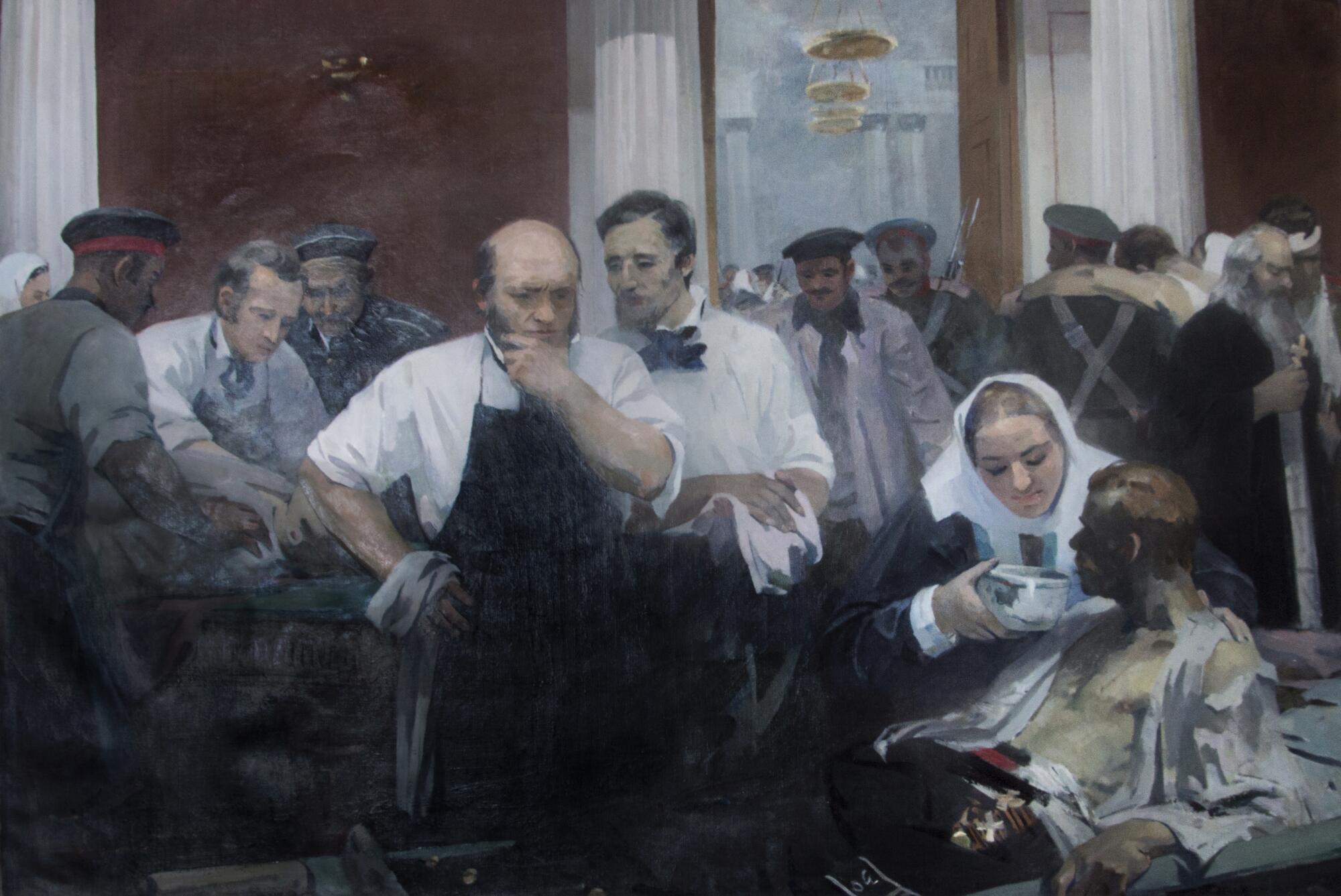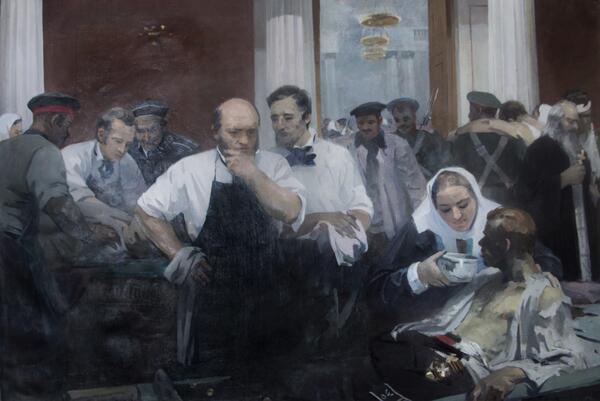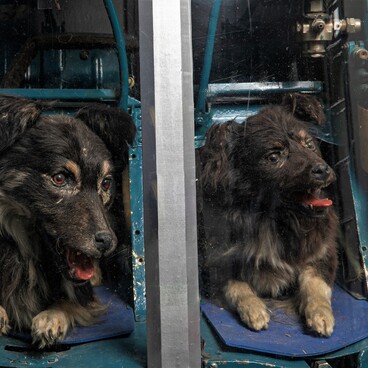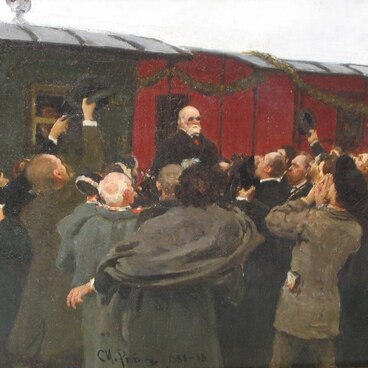Mikhail Trufanov’s painting, displayed in the exhibition of the museum, depicts Nikolay Pirogov — a surgeon and anatomist, one of the founders of topographic anatomy and military field surgery, and a well-known public figure. The canvas shows a doctor, who stands next to a wounded soldier lying on a stretcher; a sister of mercy gives him a drink.
In 1855, during the Crimean War, Pirogov became the Head Surgeon of Sevastopol, besieged by the British and French troops, and deployed a dressing station in the hall of the city Nobility Assembly.
The surgeon also developed a new triage system for the wounded. He divided patients into five categories based on the severity of injury. The first category included those whose wounds were so severe that they were unlikely to survive — the hopeless and mortally wounded, the second category — the seriously and dangerously wounded, requiring emergency surgery on the spot. The third category consisted of seriously wounded soldiers who needed treatment and transportation to the hospital. The fourth category — the patients to be sent to the hospital, and the fifth category — those who needed extracting a shallow bullet or applying a bandage. This system allowed the wounded to receive the necessary assistance on time.
Pirogov recalled:
Pirogov at the Nobility Assembly Hall
Время создания
1960
Размер
110x162 cm
Техника
oil, canvas
Коллекция
2
Открыть в приложении#6
Mikhail Trufanov
Pirogov at the Nobility Assembly Hall
#2
#4
All eyewitnesses will never forget the time spent from March 28 to June in the Nobility Assembly. During all this time, near the entrance to the assembly, on the street where missiles fell from the sky so often, blowing up the ground, and bombs were dropped, there was always a transport company of soldiers […] bunk beds and bloody stretchers were ready to receive the wounded; during the 9 days of the March bombardment, the stretcher-bearers were constantly coming through this entrance; the screams of the injured mingled with the crash of bombs; a trail of blood pointed the way to the front door of the assembly […] Doctors, paramedics and servants formed groups, moving ceaselessly between rows of the wounded, lying with their limbs torn off and crushed, pale as a sheet from loss of blood and shell-shock caused by massive explosions; the nurses’ white hoods flashed everywhere between the soldier’s greatcoats; nurses carried wine and tea, helped with bandage change and took the money and belongings of the injured for safekeeping. The doors of the hall were opened and closed every minute: the wounded were brought in and out on command: ‘on the table’, ‘on the bed’, ‘to the Gushchin House’, ‘to the Engineering House’, ‘to the Nikolaevskaya Battery’ […].
#5
160 sisters of mercy from the Exaltation of the Holy Cross Community went to the battlefront of the Crimean War together with Pirogov. The sisters applied bandages, cared for the wounded, organized the work of hospitals, and prepared the medicine. Pirogov became the first medical professional in the Russian Empire who so widely engaged women to treat patients during military operations.
#3
Ministry of Culture of the Russian Federation
читать дальшескрыть
00:00
00:00
1x
Pirogov at the Nobility Assembly Hall
Время создания
1960
Размер
110x162 cm
Техника
oil, canvas
Коллекция
2
Открыть в приложении
Поделиться



